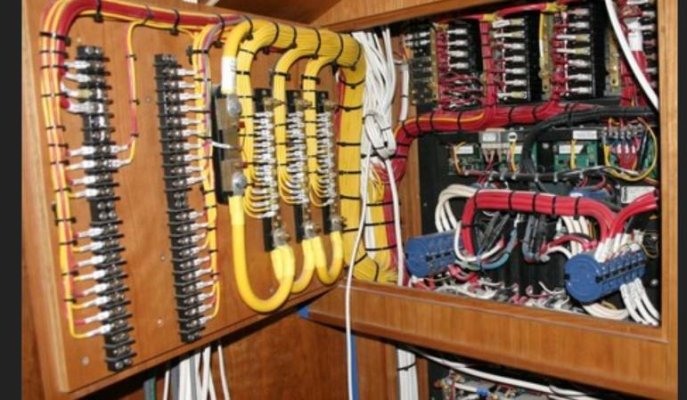TheLake
Veteran Member
- Joined
- Oct 16, 2021
- Messages
- 51
- Vessel Name
- The Lake
- Vessel Make
- 42' CHB Tricabin
Is anyone using wire mesh cable trays along the ceiling of their engine rooms? Seems like an easy solution and would reduce the heat build up.
Something like:
Is anyone using wire mesh cable trays along the ceiling of their engine rooms? Seems like an easy solution and would reduce the heat build up.
Something like:
RTF
Good suggestion to "flame polish" the cuts....
Sorry a glass term but it works and hadnt thought of it w PVC
Previous posts focused on cable trays. This picture shows a panel that could use some organization. Attached is a picture of a backplane (left) where cabling between the panel (right) is pre-configured to the backplane. Load wires are terminated on backplane greatly simplifying wire runs and cleanup.

I should have been clearer. That is not my panel, though I used a similar picture to show what I was looking for. I don't have a handy picture of how mine e turned out, probably a "7" if the picture is a "10". The key is the backplane where loads are terminated vs terminated at the panel. Allows the panel and harness to backplane to be fabricated on the bench instead in situ.Boy, that is a thing of beauty. Must have pulled all the old completely out and started over. Nice job. I’m afraid I’m too old to reach that quality. I just want to be safe.
Alex
An example of my brother Steve's work. He started from a bare panel. The boat was a 1980 Sunk Yung (SP?) Marine 37' sedan trawler. The one I often refer to as the Green Boat.
Rob
I wish I had the time, patience and skill to do that. It's like a form of art.
